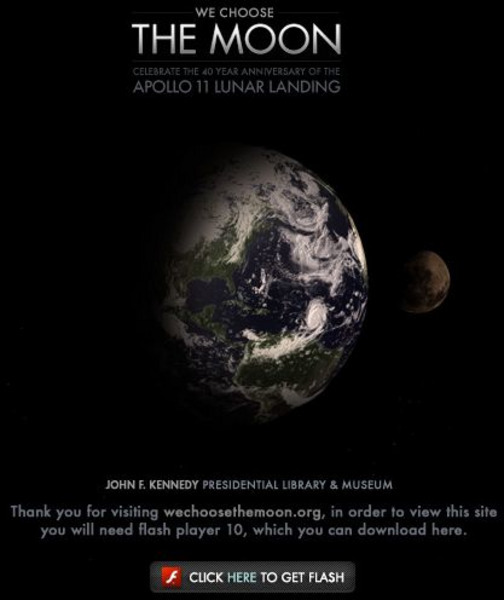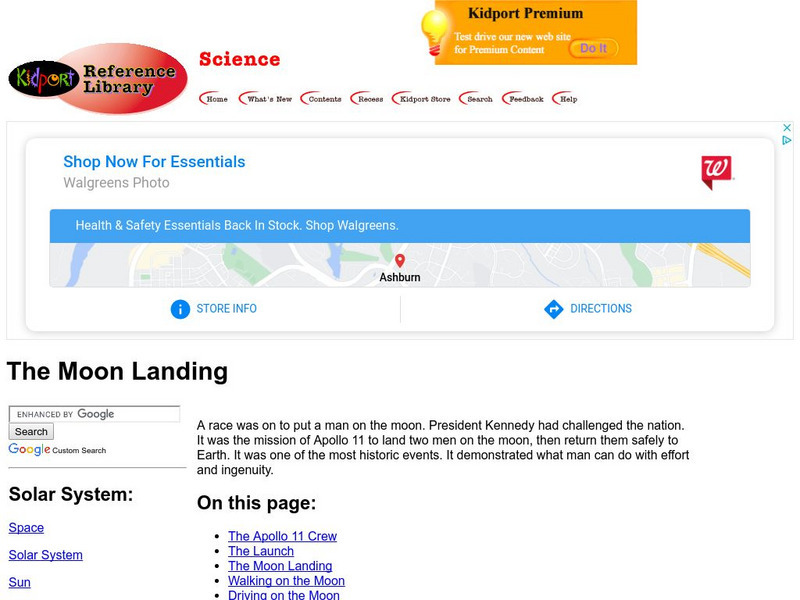Wonderville Media
Wonderville: Neil Armstrong
Neil Armstrong was the first man to walk on the Moon. He was born on August 5, 1930, in Wapakoneta, Ohio. Learn more about Neil Armstrong in this well-constructed overview by Wonderville.
Other
We Choose the Moon
Feel like you were right there when Apollo 11 was launched as you listen to the actual Mission Control audio from that date. The mission is further brought to life by photos and video of the event as well as a virtual animation. Go...
Mocomi & Anibrain Digital Technologies
Mocomi: Neil Armstrong Biography
Interesting biographical information and achievements about Neil Armstrong, the first man to walk on the moon.
Smithsonian Institution
Smithsonian Education: Walk on the Moon
This online lesson helps students explore primary sources, including photographs and audio and video recordings, in order to learn about the Apollo crew and spacecraft, the history of the space race, and the incredible technological...
Smithsonian Institution
National Postal Museum: Art of the Stamp: First Man on the Moon
View the artwork of Paul Calle as he designed the stamp honoring the first man on the moon. Read about the inspiring story that lead to the making of this stamp.
Curated OER
Science Kids: Science Images: Astronaut Neil Armstrong
A NASA photo of legendary American astronaut Neil Armstrong, the first person to walk on the moon.
Kidport
Kidport: The Moon Landing
Travel back in history and see the first men on the moon. See photos of the crew, the launch, the landing and more.
NASA
Nasa, Human Space Flight: Apollo 11 Mission
The story of the Apollo 11 lunar landing is told with dramatic details, pictures, and mission highlights.
NPR: National Public Radio
Npr: Apollo 11's Close Call
NPR provides facts about the problems faced by the astronauts on Apollo 11. Offers a great photo gallery, a video clip of the event, and excellent related web resources.
Kidport
Kidport: The Space Shuttle
Students can see actual photos of a space shuttle launching from earth as well as the people who now could go because of technology. Learn about some of the equipment and vehicles used to make it happen.






